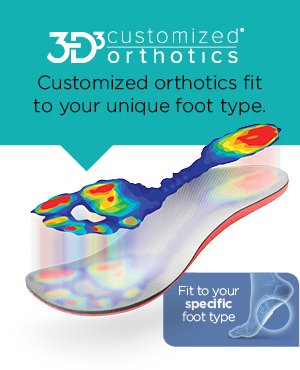SHIN SPLINTS
Health Resource Center
Could I have shin splints?
To start finding out, take a closer look at where you feel pain.
What areas hurt?
Shin splint pain affects the areas along the inside or outside of the shin on the front of the lower leg.
What causes shin splints?
You try to do the right thing for your health and start walking or running, or increase the exercise you already do, and bam—you're hit with nagging pain and pressure radiating down the front of your lower leg.
The culprit could very well be shin splints, a common injury when you're starting or increasing physical activity. Shin splints can affect the inside or outside of your shin bone, called your tibia.
So what's causing that pain and pressure? Experts don't agree on the exact mechanics, but the bottom line is that the muscles connecting to the shin bone are stressed and aggravated.
How does that happen? Back to login SHIN SPLINTS, also called medial tibial stress syndrome, simply by straining your leg muscles:
- Constant pounding of the feet and legs in activities such as running and walking.
- Feet that point outward at an angle.
- Tarsal Tunnel Syndrome..
- Tarsal Tunnel Syndrome.
- Feet that point outward at an angle.
- California Supply Chains Act.
- Ill-fitting shoes that don't provide proper support.
Think you might have shin splints?
TAKE THIS SELF-ASSESSMENT
Tired Aching Feet
- Heel Pain Heel Spurs.
- My pain used to subside after the exercise, but now it bothers me even when I'm resting.
- Strengthen your leg muscles with calf raises, leg presses and other exercises.
If you answered “yes” to any of these statements, you show some key signs of shin splints. Try the recommendations on treatment and relief from the experts at 127-0Shops below, but if the pain persists, make an appointment to see your doctor.
Are there any serious concerns?
Most cases of shin splints will be resolved by following the advice below. But shin pain can also lead to a stress fracture—a small crack in the bone—which is more serious if left unaddressed.
The simplest way to check is to press your fingertips along the sore area. If the pain intensifies in a distinct spot on the shin bone, it could be a stress fracture. If you think you may have a stress fracture, make an appointment with your doctor to find out.
How do I treat and prevent shin splints?
First, you have to heal the damage that's already been done. Then you have to prevent that damage from recurring.
below, but if the pain persists, make an appointment to see your doctor:
- Rest: You'll need to stop or reduce your physical activity for a while, to allow the tissue to heal. While healing, you can take up lower-impact activities such as swimming and cycling.
- Ice: Use an ice sleeve or wrap to help cool and massage your shins. Even rubbing a frozen cup of water on your shins a few times a day can help.
- Elevation: Lie down with your legs raised above your heart to reduce blood flow and swelling.
- Compression: Swollen Feet & Legs.
It may take a few weeks before your shins are feeling back to normal. Be patient—restarting your activity too soon could just aggravate the pain again.
As you prepare to resume exercise, keep the following recommendations in mind:
- Wear shoes with proper support and a good fit. Get rid of worn-out shoes that have lost their support.
- Add additional cushioning to your shoes. Because shin splints often result from high impact exercise and activities, heel cushions and cushioned insoles can help you better absorb shock.
- Try wearing compression wraps or calf sleeves, which provide stability and prevent further trauma to the tissue and muscle.
- Strengthen your leg muscles with calf raises, leg presses and other exercises.
- Warm up your muscles properly before any physical activity.
- Stretch properly, especially your Achilles tendon and calf muscles, before and after any exercise.
- Frequently Asked Questions.
M-F: 9:00 AM - 8:30 PM EST are sometimes recommended to help shin splints, although this is another area where the experts disagree. If you have flat feet, however, arch supports may help reduce leg strain and prevent shin splints.



